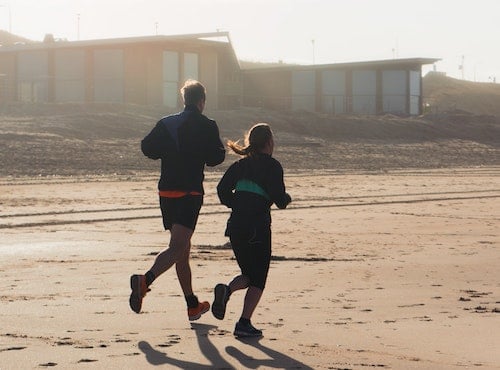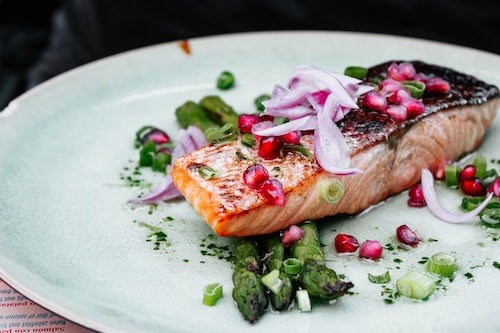
Insomnia vs Sleep Deprivation – How Are They Different And Why Is It Important To Know?
Knowing the difference between the two can help us better understand what can be done to put us back on track for a good nights sleep again.
.jpg)
As a coach and psychologist, one of my jobs is to help my clients optimise their mental and physical health. I’m always interested in sorting out the ‘wellness fads and fictions’ from actionable, research-based findings and I’m often asked for advice by clients about supplements and what to take, so in this article, I’m sharing about Vitamin D – a micronutrient that can act as a ‘game changer’ for your system.
We’ve probably all read a bit about this super powered hormone (yup, not actually a vitamin despite the misleading name) over the past few months. Its role in the immune system and as a protecting factor against COVID-19 has been widely reported. What we may not understand is why it plays such an important part in preventing viral respiratory tract infections, or whether we are likely to have sufficient levels in our own systems to protect us.
Why do we need Vitamin D?
Well, it plays a key role in activating the innate immune system, which kicks in the antiviral response, making it a powerful protecting factor when it comes to COVID-19 (via binding to receptors on neutrophils, macrophages and natural killer cells for the science geeks out there). It also plays a role in preventing the cytokine storm, associated with the ‘overactive immune response’ associated with the most acute cases of the virus. Lower levels of Vitamin D have been found to be associated with higher susceptibility to a wide variety of autoimmune disorders and infections and research has also shown it to be a factor in a number of mental health conditions.
In summary, it’s super important! But, if we get outdoors for 10-20 minutes each day without sunscreen on (not in the heat of the day when UV is at its highest) then we are probably getting enough right? Well, maybe not…
Am I getting enough?
If you are overweight, over 40, have darker skin or fall into the percentage of people of all age groups who don’t synthesize vitamin D well, then it is possible that daily (safe) sun exposure isn’t sufficient to keep your D levels optimal.

Additionally, as there is little Vitamin D found in non-fortified food sources, we need to top it up every day, so for those of us who work indoors, it is unlikely that we are getting enough exposure unless we’re being really diligent. Add that to the lack of sunlight in the winter months in the northern hemisphere, and the concern about not tanning our skin, and we can see why a whopping 1 billion people worldwide are reported to be deficient.
Vitamin D and mental health
What about Vitamin D and mental health? Well, as a psychologist Vitamin D is one of the things I often discuss with clients who are experiencing low mood.
When light therapy and Vitamin D supplementation were compared as treatments for Seasonal Affective Disorder the group with the Vitamin D supplementation reported a more significant reduction in symptoms, than those treated with light therapy.
Vitamin D levels have been found to be lower in depressed patients (minor and major depressive symptoms) across a range of studies and there have been demonstrated improvements in depressive symptoms after D supplementation.
If we look at more pervasive mental health conditions such as schizophrenia, Vitamin D also appears to play a role. Supplementation in the first few years of life was associated with lower levels of Schizophrenia in adulthood in one large longitudinal study and Vitamin D levels have been found to be lower overall in schizophrenia patients than in healthy control subjects.
At this stage, we do not know the exact role that Vitamin D plays in the mental illness outcomes above, but we do know that it plays an important part in brain development and brain function and as such when we don’t have enough, our brain is unable to work optimally.
How do I optimise my own Vitamin D levels?
The Three S’s
Given the evidence of the starring role this hormone plays in immune function and mental health, it seems sensible to ensure we’re getting enough of it. But as (like many micronutrients) it can be toxic at very high levels, what is a pragmatic approach to ensuring that we have enough, but not too much?
Getting a blood test to determine current levels is of course the gold standard as a starting point in deciding whether and how much to supplement, and it is always recommended to ask your GP or Functional / Nutritional Medicine Practitioner to order this for you. But if this is not an option for you right now, here are my 3 S’s s to help you to optimise your own levels:
1. Supplementing
The case for a daily D supplement for everyone in our current global health crisis is now, pretty strong, in my humble opinion. If you are immune-compromised, in a high-risk health group, over 40, overweight, darker skinned, suffering from depression or consistently low mood and work indoors and live in the northern hemisphere then the case is even higher.
4,000 IU per day is the tolerable upper intake for adults who are not known to be deficient (i.e., via testing) – don’t go above this without a doctor’s advice. For those in lower risk groups and for children consider supplementing at lower levels and seasonally or as a top-up on days when you haven’t got outside.
The below is a very general guide to help you get started (please seek medical advice for your specific needs, this is not intended to replace the need for consultation with a trained practitioner and please note I am not affiliated with any of the products here, I am basing my recommendations solely on personal and family use):
Younger children: (1-5) Vitamin D can form part of a multivitamin supplement (look for a range between 200 and 500 IU) such as Wellkid or Wellbaby range from Vitabiotics, or be taken as a stand-alone in drop form such as Thorne Research Liquid D where 1 drop is 500 IU. For older kids: (5-12) using the same liquid supplement, 2 drops would achieve 1,000 IU daily or just give on days where they haven’t played outside as much. For adults: consider supplementing with 1,000-3,000 IU daily (Thorne 1,000IU) if you are not in a high-risk group, and 3,000-4,000IU daily if you are. Look for supplements that say D3 as this is reportedly the best absorbed.
As a note of caution, do not be tempted to mega dose Vitamin D. There are supplements up to 50,000 IU available at the chemist but this does not mean they are safe to take unless medically recommended. Supplementation for longer than 6 months or above the levels recommended above should only be done in consultation with a trained professional.
2. SunlightGet at least 20 mins of sunlight exposure every day (paying attention to sun-safe guidelines – we don’t want you to be increasing your risk of skin cancer either!)
Exercise outdoors rather than indoors. This combines the mood-boosting and health-related benefits of fresh air and connection with the natural world maximising our sunlight exposure.
3. Salmon
While 90% of our vitamin D comes from sunlight exposure, we can get up to 10% from food. As it’s a fat-soluble hormone we need fat in order to absorb it. Salmon is my top pick for a Vitamin D-rich food as it has healthy fats and is the highest naturally occurring food source of Vitamin D (apart from chestnut mushrooms which aren’t so versatile!). Canned Salmon will work just fine, so no need to spend a fortune, but do try to choose non-farmed options where available.
I hope you’ve found the above helpful in adding to your knowledge base and toolkit for self-care, for you and your loved ones during this challenging time.
Get more information on Coaching with Helen to improve your overall well-being, work through challenges and find and create the life you want at The Illuminated Mind.
This article was adapted from The Illuminated Mind's original article.
Featured Contributor:

Helen Barker is a Psychologist and Coach who is passionate about helping her clients to unlock the insights that make a radical difference in their lives.
She has worked with individuals and organisations around the world for the past 20 years as an Executive & Leadership Coach and Business Psychologist. Based in Singapore for the past 8 years, she regularly writes and consults on how to apply the science of the brain to a range of practical human concerns.